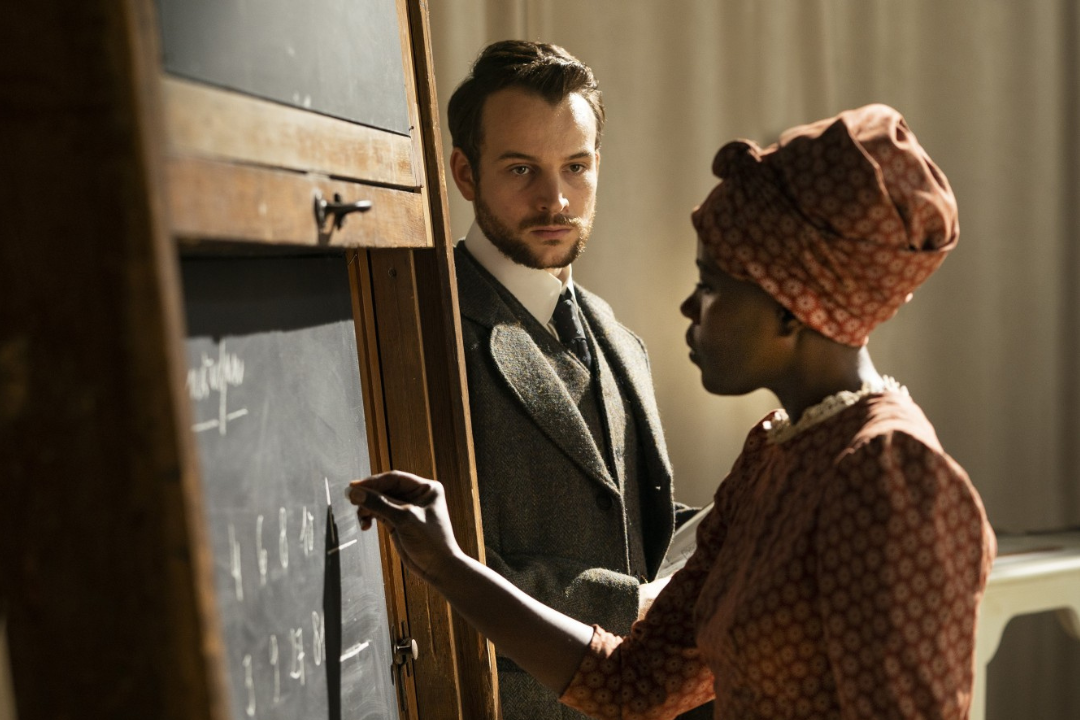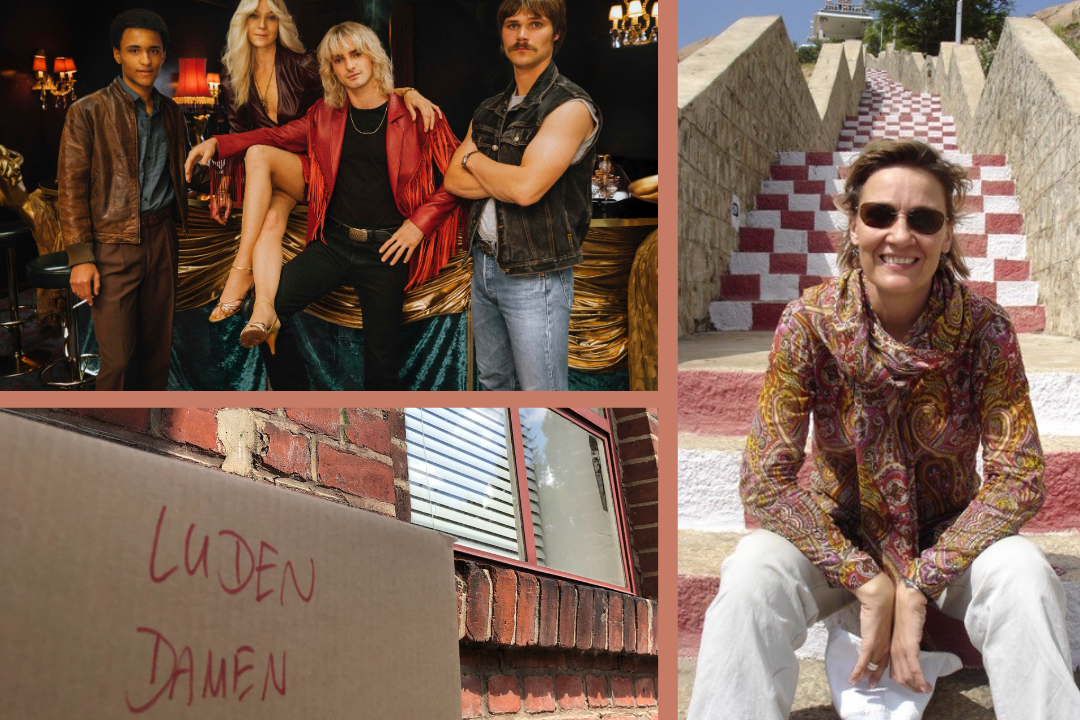Theaterkunst Talk
Gabriele Binder
For many years now, Berlin-based costume designer Gabriele Binder has been a regular customer of ours. Known for her contributions to national and international productions such as “The Queen’s Gambit”, “The Dasslers”, “The Lives of Others” as well as the 2018 German Oscar nomination “Never Look Away”, she has received numerous awards for her work, including an Emmy and the Costume Designers Guild Award.
Her current project, “Young Woman and the Sea” will be released in U.S. cinemas in May 2024. It tells the true story of Gertrude ‘Trudy’ Ederle (Daisy Ridley), who defied all odds and the forces of a patriarchal society to win a spot on the U.S. Olympic swimming team and pursue her goal of swimming the 21-mile stretch of the English Channel from France to England.

Copyright: Disney, Netflix, privat (Portrait)
Theaterkunst
Gabriele Binder
“Young Woman and the Sea” will open in American movie theaters in May. What’s so special about this 1920s-era film?
The film is set in the years 1915-1926. In terms of costume work, it was exciting to have the story take place in the era when the bathing suit was “invented”. But of course there’s really no such things as inventions in fashion. It’s more like an evolution that saw the fashion of women’s bathing attire shift from elaborate beach dresses to more sporty one-piece bathing suits. As recently as the 1910s, swimming was an almost exclusively male domain. When swimming became a women’s athletic discipline at the start of the 1920s, the bathing suits worn by the first female athletes were very similar to those worn by men. So there was this brief unisex phase, at a time when clothing was otherwise highly gender-specific. It was also an initial big step out of the prudishness that prohibited women from showing bare legs or upper arms. When it comes to fashion, it was a time of new beginnings – something that “Young Woman and the Sea” also addresses.
I also found it interesting to do research into German immigrant life in New York from 1915-1925, because while Trudy Ederle was born in New York, her parents had only recently immigrated to the United States from the region of Baden, and they lived in the German part of Brooklyn. The result was an interesting blend of slightly misunderstood American fashion mixed in with rural German clothing. That granted us a certain degree of freedom and variety, especially in terms of the background, which Christian Binz (Crowd Costume Supervisor) designed with a great deal of creative expertise.
One of the bigger challenges was that, although the project was based in Bulgaria, it came with the expectations of an American Disney-production… it was the clash of two worlds.
While you were here visiting Theaterkunst for your work on the film, we remember you mainly doing research on the topic of ‘20th-century bathing fashion’. Did you put any of the insights you gained into the final costume design?
I certainly did, and we very much enjoyed exploring your swimwear department. You have a number of interesting woolen bathing suits from Jantzen, which was the leading swimwear company in the United States at the time. It was quite helpful that we were not only able to see them on photos, we could also touch the thick wool fabric on site and figure out how we could stay true to the look without the having the weight of the material become a hindrance for swimming.
The costumes for the Netflix series “The Queen’s Gambit” garnered quite a bit of attention internationally, and received numerous awards. What was so special about the costume design for that film?
“The Queen’s Gambit” was a project where I feel that so many things just came together: an inspiring and solid screenplay, and a sensitive director who also acted as showrunner. From Netflix, we had full trust and creative license. Then there was our highly motivated German team, a fantastic cast through and through, and of course Anya Taylor-Joy, who is a such a gift for the film’s costume design, because of how much she lived and loved the costumes. Overall, the collaboration was incredibly respectful and positive, and it gave me a considerable degree of freedom, as well as a fantastic team that always made great effort to implement each and every idea. I think that the costume design was just one part of the equation that fit in the context of the overall story. Personally, I was extremely surprised and happy to see how much attention the film got. After all, it’s a film about chess, which is admittedly more of a niche subject.
What role does a costume collection play in your work? Do you feel like the costume business is meeting its full potential when it comes to the issue of sustainability?
Costume collections are key players when it comes to historical films, but I really enjoy making use of them for contemporary projects as well. A good collection already contains pre-selected, camera-ready clothes, and you can often find things that are no longer available on the market. On the whole, it makes my work much easier. They are places of research! What I really like about your collection is that you still have so many original pieces from past periods, and in good condition too, and yet I can also find good reproductions, which is important because the originals are often no longer in line with today’s sizes and body shapes. Still, they are very crucial as templates for creating cutting and design patterns, so in that respect they help revive an authentic image of past times. You also have a very good system that is organized by period and size, which helps expedite the selection process. I like being able to revisit the decades that came before the era I’m portraying, which allows me to develop a good feel for a period without having to delve too deep into the research.
And of course, renting costumes is more sustainable than buying them. The sustainability is rooted in the preservation and re-use of an item, no question about it.
You also have your own costume collection, “Comme de costume”, so you’re familiar with both the work of a costume designer and that of a collection owner. What expectations do you have of a collection?
A good collection is a place of inspiration, where you not only find what you’re looking for, but also things you didn’t even know you may still need. A place that helps ensure that the costume design is appealing and surprising in the end.
Thank you for the interview!
Thank you! 🙂














